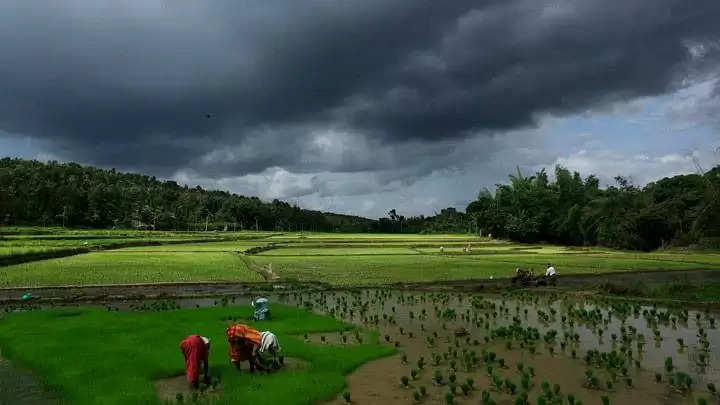Varied monsoon in northeast likely to affect crops

Agartala| Aug 3, 2019(IANS)
Amid the monsoon, five of the eight northeastern states experienced normal rainfall while Manipur and Nagaland witnessed huge deficiencies and only Sikkim observed excess rainwater.
According to scientists of the Indian Council of Agricultural Research (ICAR), the erratic monsoon is likely to affect both Kharif and Rabi crops in the northeastern region.
ALSO READ:NAGALAND: 19-yr-old woman found dead near jungle in Peren
As per the Indian Meteorological Department (IMD), Arunachal Pradesh, Assam, Meghalaya, Mizoram and Tripura witnessed normal rainfall, while Manipur and Nagaland experienced 60 per cent and 29 per cent shortages of downpour during the first two months – June and July – of the four month-long monsoon period categorising as large deficiency and deficiency respectively.
Only Sikkim witnessed 28 per cent excess downpour against the 900 mm normal rainfall during June and July.
IMD Director Dilip Saha said in Agartala that the four-month-long southwest monsoon is now in full-swing in most parts of mountainous northeastern region.
"Like previous years, there would be normal monsoon in the eight northeastern states. The current weather condition is favourable for the good monsoon," Saha told IANS.
ICAR scientist B.K. Kandpal said that during the initial period of the current monsoon, there was deficiencies of rainfall affecting and delaying the cultivation of Kharif crop.
"We predict that due to the erratic monsoon, the cultivation of Rabi crop would be delayed. I have some hesitation about the production of both Kharif and Rabi crops this season," Kandpal told IANS.
ALSO READ:Man comes back to life in Assam morgue after declaring dead
The Indian harvest season is classified into two main seasons — Kharif and Rabi based on the monsoon. The Kharif cropping season is from July-October during the southwest monsoon and the Rabi is from October-March (winter).
The crops grown between March and June are summer crops.The two northeastern states Assam and Arunachal Pradesh witnessed huge floods and landslides while most parts of Mizoram and Tripura experienced similar natural disasters for some weeks.
The northeastern region is endowed with 33 per cent of country's water resources. It receives annual rainfall ranging from 2,480 mm to 6,350 mm.
The annual water availability 44,180 cubic meters per hectare is the highest in the country.
Due to high rainfall, the region has inherent advantage to exploit rain-water harvesting.
However, the rate of harnessing and utilising irrigation potential has been low since only 24 per cent of net cultivable land is irrigated.
ALSO READ:MIZORAM: Over 1098 people arrested for not having valid ILP in state
To improve farm productivity and ensure better utilisation of water resources, Irrigation Department of Assam had last month launched minor irrigation scheme — 'Har Khet Ko Pani'.
The scheme would provide irrigation facilities to around 1.4 lakh acres of agricultural land in the state. Under it, 4,779 solar and electricity operated tube wells will be installed benefiting over 20,000 farmers.

















